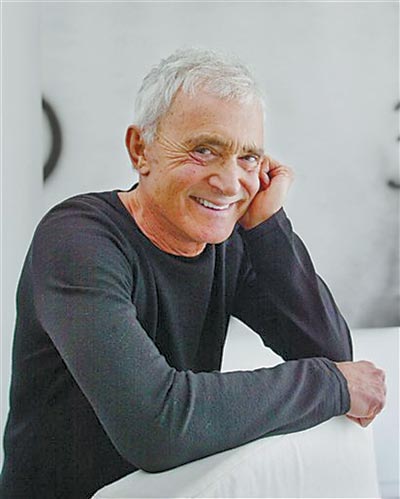Vidal Sassoon: A head for business
 |
|
Vidal Sassoon poses in his home in Beverly Hills, California. Damian Dovarganes / AP |
 |
|
A model wears a Sassoon style. |
A bottle of Vidal Sassoon shampoo costs 88 yuan ($14) in the supermarkets - about four times the price of a simple meal for the average Chinese worker. But, to many, it is money well spent.
Chen Huangchao first saw a Vidal Sassoon shampoo commercial on TV when he was in fifth grade.
A decade later, he still thinks the shampoo is the best.
"My hair gets oily very quickly," the 23-year-old Shanghai native says. "Using other shampoo brands didn't really help me. After I started using Sassoon, my hair felt soft and clean and dry - properly dry."
Chen, now a graduate student in Beijing, finds the shampoo a bit "too expensive" but does not hesitate to recommend it. Such loyalty to Vidal Sassoon products is one of the legacies of the eponymous British hairstylist, who died on May 9 at his home in Los Angeles. He was 84 and had been battling leukemia.
Sassoon, who started out as a London barbershop apprentice at 14 and opened his first salon nine years later, revolutionized hairdressing in the mid-'60s with short, geometric cuts, inspired by Bauhaus architecture.
His signature was the five-point cut - a snug bob with a W at the nape of the neck and a V in front of each ear - and the asymmetric bob, the Nancy Kwan (named after his hair model) and the "Greek Goddess" - a short, tousled perm.
These low-maintenance, "wash-and-wear" looks marked the end of the heavily styled beehive and bouffant hair of the '50s. It fit right in with the growing women's liberation movement of the times.
"Women were going back to work. They were assuming their own power," Sassoon told the Los Angeles Times in a 1993 interview. "They didn't have time to sit under the dryer anymore."
Now, his work is among the building blocks of modern haircuts - even on the other side of the world.
"Sassoon provides us with basic styles," says Hang Yue, a hairstylist to Chinese movie stars like Zhang Ziyi, Gong Li and Fan Bingbing. "We just modify the details. And that's what we call a classic - one basic style that can be made into different looks."
At the training center of his Yue Aesthetics salon, which has branches in Beijing and Hong Kong, Hang has even introduced a course that studies Sassoon's work.
"I think every person in this industry should know about him, his business and how he influenced the world," Huang says, adding that he considers Sassoon the most influential foreign hairstylist in China.
Sassoon's looks did not boom on the Chinese mainland until the turn of the millennium.
Since the country's economic reforms started only in the '80s, it wasn't until 1997 that the first of two mainland Sassoon salons and training centers opened in Shanghai. Initially, Chinese women apparently regarded Sassoon's quintessential bob as old rather than innovative.
"They considered it an old-fashioned 'revolutionary' hairstyle, similar to the short hairstyle popular among young women in the 1920s and 1930s," says Loh Meepoh, a Malaysian Chinese, who is principal of the Vidal Sassoon Academy in Shanghai.
"Gradually, they started seeing it as chic and elegant."
Sassoon was also the first hairstylist to allow his name to be used on salons and products, such as shampoos and conditioners.
In China, they changed the way people thought of grooming.
"The brand represented a lifestyle of caring for one's hair," Zeng Jing, a hairstylist and instructor at the Tony Studio Styling School in Beijing, says. "In the past, Chinese people did not spend money on their hair."
By the time Sassoon sold his company in 1983, sales of its products had reached more than $100 million, according to the New York Times. He had also opened more salons in England and the United States, where he moved in the early '70s.
Some Chinese, however, did not know that behind the Sassoon brand was Sassoon, the man - until reports of his death made headline news.
"I've always seen VS ads, but only now do I know that he's also a person, a real talent," a netizen with the username Cara-Dora says on Sina Weibo.
Another, called I Love Cats, pondered Sassoon's life after death: "Maybe God wants to change his hairstyle?"
Contact the writers through tiffany@chinadaily.com.cn.






















